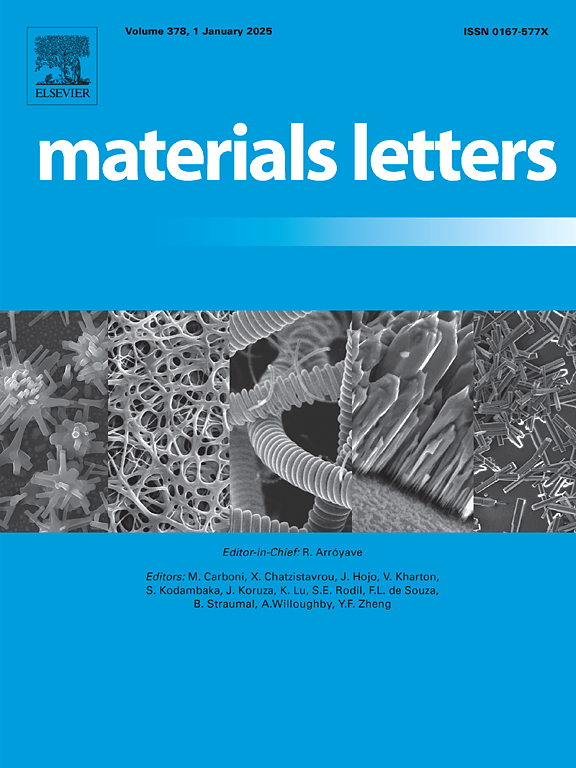生物基碳在可持续印刷电子中的功能材料
IF 2.7
4区 材料科学
Q3 MATERIALS SCIENCE, MULTIDISCIPLINARY
引用次数: 0
摘要
短期使用电子产品的生产和处置由于资源的密集使用、危险的加工和日益增长的电子废物而对环境造成重大影响。我们提出了一种生物基碳墨水的合成,作为一种可持续的印刷电子功能材料,展示了它在非涂布纸基板上作为温度传感器和加热器的应用潜力,以实现完全生物基和潜在的可生物降解器件。对于温度传感,获得了-2.3 * 10-3 K−1的电阻热系数,而加热元件在0.5 W时的温度高达160°C。本文章由计算机程序翻译,如有差异,请以英文原文为准。
Bio-based carbon as functional material in sustainable printed electronics
The production and disposal of short-term-use electronics pose significant environmental implications due to intensive resource use, hazardous processing, and growing electronic waste. We present the synthesis of a bio-based carbon ink as a sustainable functional material for printed electronics, demonstrating its application potential as temperature sensor and heater on uncoated paper substrate for the realization of fully bio-based and potentially biodegradable devices. For temperature sensing, a thermal coefficient of resistance of –2.3 * 10–3 K−1 was obtained, while the heating element exhibited temperatures of up to 160 °C at 0.5 W.
求助全文
通过发布文献求助,成功后即可免费获取论文全文。
去求助
来源期刊

Materials Letters
工程技术-材料科学:综合
CiteScore
5.60
自引率
3.30%
发文量
1948
审稿时长
50 days
期刊介绍:
Materials Letters has an open access mirror journal Materials Letters: X, sharing the same aims and scope, editorial team, submission system and rigorous peer review.
Materials Letters is dedicated to publishing novel, cutting edge reports of broad interest to the materials community. The journal provides a forum for materials scientists and engineers, physicists, and chemists to rapidly communicate on the most important topics in the field of materials.
Contributions include, but are not limited to, a variety of topics such as:
• Materials - Metals and alloys, amorphous solids, ceramics, composites, polymers, semiconductors
• Applications - Structural, opto-electronic, magnetic, medical, MEMS, sensors, smart
• Characterization - Analytical, microscopy, scanning probes, nanoscopic, optical, electrical, magnetic, acoustic, spectroscopic, diffraction
• Novel Materials - Micro and nanostructures (nanowires, nanotubes, nanoparticles), nanocomposites, thin films, superlattices, quantum dots.
• Processing - Crystal growth, thin film processing, sol-gel processing, mechanical processing, assembly, nanocrystalline processing.
• Properties - Mechanical, magnetic, optical, electrical, ferroelectric, thermal, interfacial, transport, thermodynamic
• Synthesis - Quenching, solid state, solidification, solution synthesis, vapor deposition, high pressure, explosive
 求助内容:
求助内容: 应助结果提醒方式:
应助结果提醒方式:


